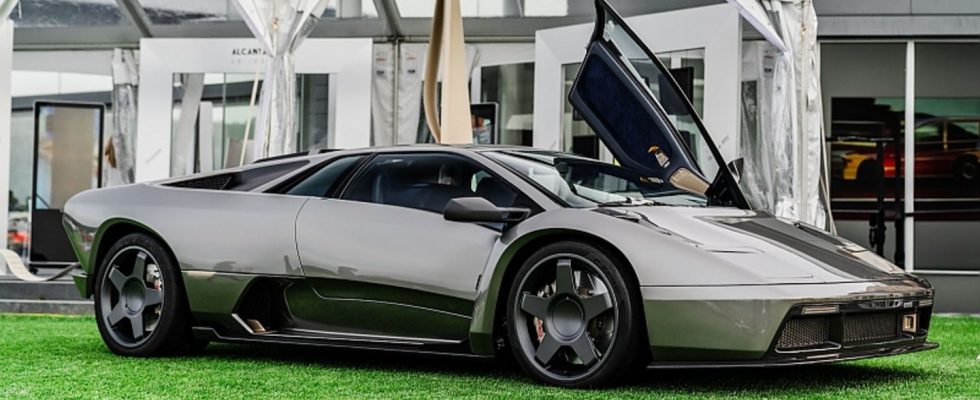Fascination: What’s behind Alcantara?
Sustainable hand flatterers
Alcantara
© press-inform – the press office
Sustainable interiors are a big topic in the automotive industry, but if you want something particularly elegant, you can’t avoid leather. Especially with sporty vehicles, things can be a little more exclusive, as leather coverings on seats and panels are often combined with Alcantara. But what is behind the elegant upholstery material from Milan?
Anyone who travels in a luxury sedan or an SUV above the upper class usually treats themselves and their fellow travelers to leather seats, which are often air-conditioned and comfortably fit the occupants’ bodies. If it’s sporty or particularly exclusive, Alcantara often comes into play. Because it’s about particularly valuable ones Interiors, hardly any manufacturer in the world can ignore the company from northern Italy, which was founded in 1972. The best example is the still young luxury SUV Ferrari Purosangue with a price of almost 400,000 euros. However, the crossover with its 725 hp V12 naturally aspirated engine does not come with leather seats ex works, but with unique Alcantara equipment, which sets new standards in terms of sustainability. The interior is made from plastics that are 68 percent recycled. Apart from a few small parts, the entire interior of the Purosangue is lined with the fine synthetic material. Seats, panels, interior roof, pillars or instrument panel are only covered with leather upon special request. “The cover with Alcantara has advantages that are particularly important for sporty vehicles,” explains Marco Scuotto, Alcantara sales manager. “The material is not only sustainable, but saves around half the weight compared to leather and is easy to clean. “
Sustainable hand flatterers
The new material was certified by the ICEA (Istituto per la Certificatione Etica ed Ambientale) with the sustainability seal according to the Recycled Claim Standard, which tracks the individual components from the source to the final product. In general, the Purosangue is the most sustainable Ferrari ever. 85 percent of the equipment elements were produced sustainably. For example, the roof lining is made of recycled polyester and the carpets are made of polyamide that was recycled from fishing nets. The Purosangue becomes the first production vehicle in the world to use this special version of Alcantara, which is largely made from recycled polyester. Other brands are expected to follow soon.
It looks very similar in the interior of the BMW XM or on the steering wheel and seats of numerous sports cars from Porsche, Lamborghini or Alfa Romeo. Toyota covers the sports seats of the limited Supra GT4 Plasma Orange and Lamborghini can also equip its Revuelto super sports car, which costs at least 500,000 euros, with an Alcantara interior upon request. “Style, creativity and ultra-modern design come together in the BMW XM to create a unique composition that has never been seen before,” says Andrea Boragno, CEO of Alcantara has remained that relies on innovation through quality and tradition. Alcantara is light, durable and, thanks to its feel and elegance, the material of choice for the world’s leading manufacturers.”
The electric sports car Alfa Romeo Stradale, a small series of 33 high-performance sports cars – also with Alcantara details on the inside – is even more spectacular than the beefy BMW There is an exclusive combination of Alcantara and leather on the seats, dashboard, door panels and center tunnel – available in black, red/black or blue/black.
But Alcantara not only looks good, is particularly easy to grip and elegant on steering wheels and seats, but is also sustainable. The Milan-based company has been CO2-neutral since 2009. This means that all CO2 emissions that arise during its work on projects such as the various car manufacturers are offset not only during the production, but also during the use and disposal of the product. This applies not only to the headquarters in northern Italy, but also to the production facility and research center in Nera Montoro in the heart of Umbria.

